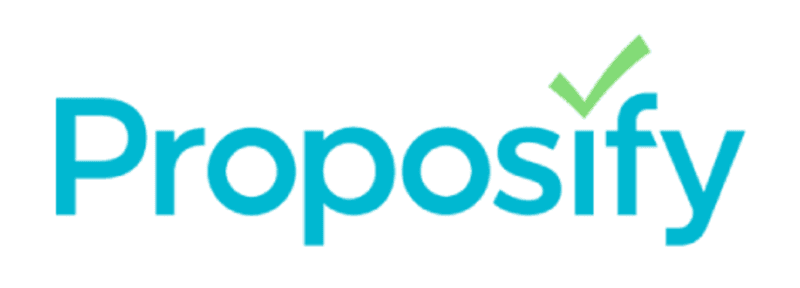How Proposify uses RudderStack for real-time attribution

Proposify’s online proposal software helps businesses close deals faster.
Challenges
- Web and mobile app instrumentation
- Reliance on server-side event streaming due to app blockers
- Tracking anonymous user events was cost prohibitive
Results
- RudderStack SDKs and Integrations allow Proposify to seamlessly capture cross-platform events
- With no cost-based volume limitations, they can collect all their data and route it to their warehouse and downstream destinations
Proposify's data stack
- Data Collection and Synchronization
RudderStack Event Stream, Warehouse Actions, & RudderStack Cloud Extract, Stitch Data, Segment - Data Warehouse
Amazon Redshift - Data Transformation
DataForm - Business Intelligence
Mode Analytics - Cloud Toolset for Activation Use-cases
Marketo, Google Analytics, Facebook Pixel, Intercom, Google Tag Manager, Heap.io, Salesforce, Slack
Proposify's data challenges
Proposify uses RudderStack to manage their real-time customer event streams and build efficient cloud ETL pipelines to their data warehouse. Here are various components from their stack:
As a data-driven company, Proposify uses both the event and non-event data from various sources to make business decisions around their product and marketing strategies. They primarily have two kinds of data users - the operations team that keeps the ETL data pipelines working and the data consumers who use different downstream tools that leverage data fed by these pipelines for their various activation use-cases.
Simplified real-time data collection
Before implementing RudderStack as a part of their customer data stack, Proposify was facing major challenges in instrumenting their web and mobile apps. App blockers were proving to be another obstacle, so they mainly had to rely on server-side event streaming.
Also, tracking anonymous user events got quite expensive, and linking them with their website event data required extensive manual coding. All these problems meant their data team could not collect and utilize all of their data without a significant cost and technical overhead.
With RudderStack’s SDKs, Proposify’s data team could seamlessly capture all their cross-platform events through simple, easy-to-use integrations. They can instrument new destinations in RudderStack to route all their marketing website events without relying on tag managers or actual code deployments. Also, as there are no cost-based volume limitations, they can collect all the anonymous user data, link with their customer events, and route all of this information into their warehouse and various downstream tools.
Before RudderStack, instrumentation of the new ‘destinations’ for the marketing website required either Google Tag Manager or actual code deployments, thus, doubling our efforts. Now, we can just add the destinations in RudderStack and skip all the manual deployments.
Standardized data sync and delivery across the entire customer data stack
Before RudderStack was a part of their infrastructure, all of Proposify’s data was highly siloed. The same data would be present in different states in different systems. Fixing this required manual double-checking or importing fresh data from the warehouse, delaying a lot of marketing, sales, and product initiatives.
By implementing RudderStack, Proposify eliminated all of these problems by standardizing real-time data synchronization across their entire customer data stack. They leveraged RudderStack’s Event Stream, Cloud Extract, and Warehouse Actions features to ensure data from all their sources - including websites, mobile, and third-party cloud apps - was captured and delivered to their warehouse and other third-party tools.
With reliable, consistent, and standardized data at their disposal, Proposify’s teams don’t have to worry about data parity. They can make data-driven decisions around the product and other key aspects surrounding marketing and sales confidently.
Activating enriched warehouse data
With RudderStack, Proposify can mirror all their marketing automation, CRM, customer support, and payment data into their data warehouse. This data is then processed and modeled to provide insights to various business units.
For instance, by leveraging the enriched warehouse data, Proposify’s product team can accurately determine how their customers are using the product. These insights allow them to understand user journeys and optimize the product features accordingly.
- Marketing and sales teams have access to all the top-of-the-funnel insights.
- They can identify the channels that drive the most leads and conversions and track the impact of various marketing campaigns on the revenue.
- This allows them to optimize their marketing spend, design a robust sales funnel, and build better marketing campaigns that boost their user conversion and retention rates.
A robust data infrastructure that delivers true value
Thanks to a well-designed, scalable data infrastructure in place with RudderStack at its core, Proposify can gather rich, timely data that is used to derive value across different product and business functions.
Instead of wasting their time and efforts on instrumenting data pipelines, RudderStack has allowed their teams to focus on what matters most - delivering insights that power growth and customer satisfaction.






